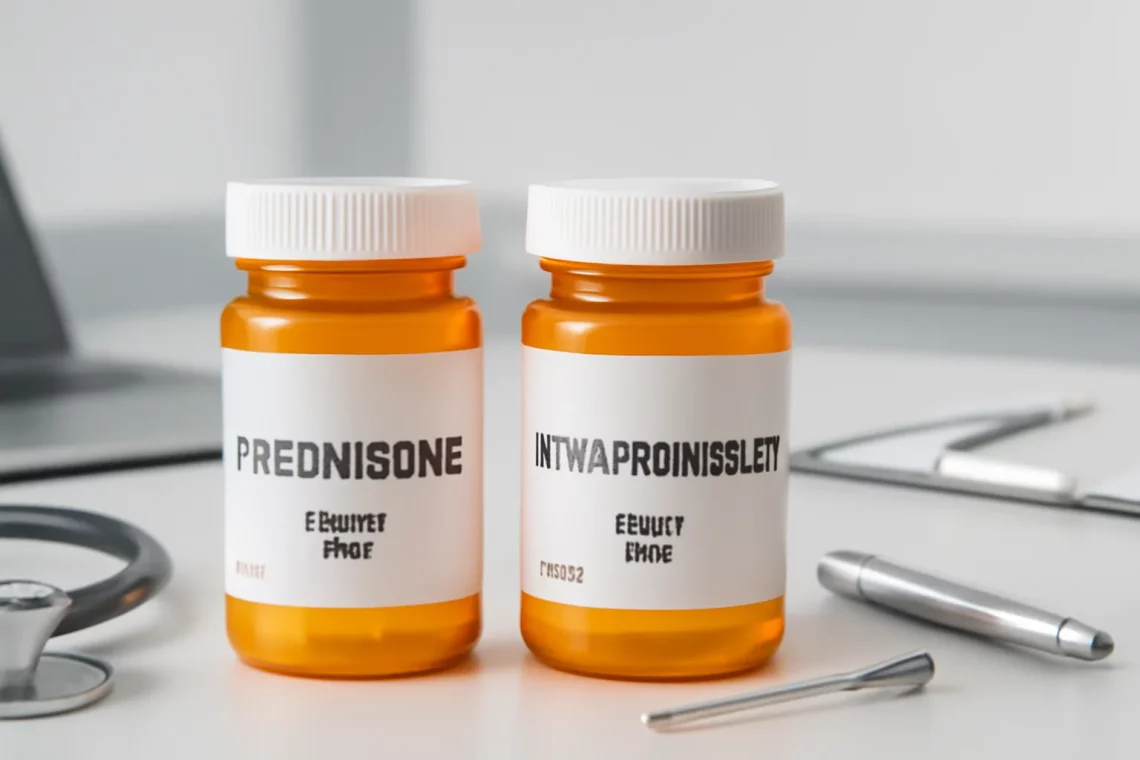
Prednisone vs Methylprednisolone: Which Is Right for You?
Prednisone and methylprednisolone are both corticosteroids that play a crucial role in the management of various inflammatory and autoimmune conditions. These medications are synthetic derivatives of cortisol, a hormone produced by the adrenal glands. They work by mimicking the effects of cortisol, thus helping to reduce inflammation, suppress the immune system, and alleviate symptoms related to a wide range of disorders, including allergies, asthma, rheumatoid arthritis, and certain skin conditions.
While both medications share many similarities in their mechanism of action and therapeutic uses, they also have distinct differences that may influence a healthcare provider’s choice when prescribing treatment. Factors such as the severity of the condition, the patient’s overall health, and potential side effects can all impact the decision to use one medication over the other. Understanding these differences and similarities is essential for patients and healthcare professionals alike, as it aids in making informed treatment decisions, ensuring optimal patient outcomes.
Moreover, with increasing awareness of the importance of personalized medicine, selecting the right corticosteroid could significantly improve the management of chronic conditions. As such, exploring the nuances between prednisone and methylprednisolone can empower patients to engage more effectively with their healthcare providers and actively participate in their treatment plans.
Understanding Prednisone
Prednisone is a widely used corticosteroid that is often prescribed to treat various inflammatory and autoimmune conditions. It is particularly effective in managing diseases such as asthma, lupus, and rheumatoid arthritis. The medication works by suppressing the immune response, reducing inflammation, and alleviating pain.
One of the primary advantages of prednisone is its oral availability, which makes it convenient for patients. Upon ingestion, prednisone is converted into its active form, prednisolone, in the liver. This conversion allows it to exert its effects throughout the body. Prednisone is typically administered in various doses depending on the severity of the condition being treated.
Patients may experience a range of side effects while taking prednisone, especially with long-term use. Common side effects include weight gain, mood swings, increased blood sugar levels, and fluid retention. Because of these potential side effects, healthcare providers often aim to prescribe the lowest effective dose for the shortest duration necessary.
It’s also essential to note that patients should not abruptly stop taking prednisone, especially after long-term use. Tapering off the medication under a healthcare provider’s guidance is crucial to avoid withdrawal symptoms and allow the adrenal glands to resume normal cortisol production.
In summary, prednisone is a potent corticosteroid that has a broad range of therapeutic applications. Understanding its uses, benefits, and potential side effects can help patients make informed decisions about their treatment options.
Exploring Methylprednisolone
Methylprednisolone is another corticosteroid that is frequently used in medical practice, similar to prednisone. It is known for its strong anti-inflammatory properties and is often utilized in treating conditions such as severe allergies, asthma exacerbations, and autoimmune disorders.
One of the key differences between methylprednisolone and prednisone lies in their pharmacokinetics. Methylprednisolone is considered to be more potent than prednisone, which means that lower doses may be required to achieve the desired therapeutic effect. This property can be particularly beneficial for patients who may be more sensitive to the side effects of corticosteroids.
Methylprednisolone can be administered in various forms, including oral tablets, injectable formulations, and intravenous infusions. The choice of administration route often depends on the severity of the condition and the urgency of treatment. For example, intravenous methylprednisolone may be used in emergency situations to quickly control severe allergic reactions or acute exacerbations of asthma.
As with any medication, the use of methylprednisolone comes with potential side effects. Some common side effects include insomnia, increased appetite, and gastrointestinal discomfort. Long-term use can lead to more severe complications, such as osteoporosis, hypertension, and increased susceptibility to infections. Therefore, it is crucial for healthcare providers to closely monitor patients on methylprednisolone, particularly those requiring long-term therapy.
In conclusion, methylprednisolone is a versatile corticosteroid with a range of clinical applications. Its potency and various routes of administration make it a valuable option in the management of inflammatory and autoimmune conditions. Understanding the benefits and risks associated with this medication can empower patients in their treatment journey.
Comparative Analysis of Prednisone and Methylprednisolone
When considering treatment options, understanding the differences between prednisone and methylprednisolone is essential for both healthcare providers and patients. While both medications serve similar purposes, their distinct characteristics can influence the choice of one over the other.
One of the primary differences is potency. Methylprednisolone is generally considered to have a stronger anti-inflammatory effect compared to prednisone. This increased potency means that patients may require a lower dose of methylprednisolone to achieve similar therapeutic outcomes. This can be particularly advantageous for individuals sensitive to corticosteroid side effects, as lower doses may mitigate the risk of adverse reactions.
The onset of action is another factor to consider. Methylprednisolone often has a quicker onset of action, which can be critical in acute situations where rapid symptom relief is necessary. This is particularly relevant in emergency settings, such as severe allergic reactions or asthma attacks, where immediate intervention can be life-saving.
The route of administration also varies between the two medications. Prednisone is predominantly taken orally, while methylprednisolone is available in multiple forms, including oral tablets and injections. The injectable form of methylprednisolone can provide rapid relief and is often used in hospital settings. This flexibility in administration can make methylprednisolone a preferred choice in certain clinical scenarios.
Side effects are a significant consideration when comparing these medications. Both prednisone and methylprednisolone can lead to a variety of side effects, but the profile may differ slightly based on patient response and dosage. Monitoring and managing these side effects are essential components of therapy with either medication.
In summary, while prednisone and methylprednisolone share many similarities, their differences in potency, onset of action, and administration routes can play a significant role in treatment decisions. Understanding these factors helps ensure that patients receive the most appropriate and effective care for their conditions.
Choosing Between Prednisone and Methylprednisolone
The decision to use prednisone or methylprednisolone should be based on a comprehensive evaluation of the patient’s specific condition, overall health, and treatment goals. Healthcare providers must consider various factors when determining which medication to prescribe.
First and foremost, the severity of the condition plays a crucial role. For acute inflammatory conditions requiring rapid intervention, methylprednisolone may be preferred due to its faster onset and higher potency. Conversely, for chronic conditions where long-term management is necessary, prednisone may be used, particularly if the patient has previously responded well to it.
Patient history is another vital consideration. If a patient has a history of adverse reactions to corticosteroids, the provider may choose one medication over the other based on the individual’s tolerance and side effect profile. For instance, if a patient has experienced significant mood swings with prednisone, a healthcare provider might opt for methylprednisolone instead.
Additionally, the dosage and duration of treatment must be carefully assessed. Both medications can have significant side effects, particularly with long-term use. Therefore, the provider needs to prescribe the lowest effective dose for the shortest duration possible to minimize risks.
Lastly, patient preference and lifestyle should also be taken into account. Some patients may have a preference for oral medications, while others may be open to injections. Discussing these preferences with patients can foster better adherence to the treatment plan and improve overall satisfaction with care.
In conclusion, choosing between prednisone and methylprednisolone involves a careful assessment of the patient’s condition, potential side effects, and personal preferences. A collaborative approach between healthcare providers and patients can lead to more effective treatment outcomes and enhance the overall quality of care.
**Disclaimer:** This article is for informational purposes only and does not constitute medical advice. Always consult a healthcare professional for medical concerns or before starting any new medication.




